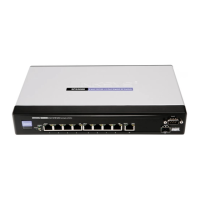10
SPS208G/SPS224G4/SPS2024 Service Provider Switches User Guide 184
Spanning Tree
Spanning Tree Protocol (STP) provides tree topography for any arrangement of
bridges. STP also provides one path between end stations on a network,
eliminating loops.
Loops occur when alternate routes exist between hosts. Loops in an extended
network can cause bridges to forward traffic indefinitely, resulting in increased
traffic and reducing network efficiency.
The device supports the Classic STP Spanning Tree version, which provides a
single path between end stations, avoiding and eliminating loops.
The device supports the following Spanning Tree versions:
• Classic STP — Provides a single path between end stations, avoiding and
eliminating loops.
• Rapid STP (RSTP) — Detects and uses network topologies that provide
faster convergence of the spanning tree, without creating forwarding loops.
• Multiple STP (MSTP) — Provides full connectivity for packets allocated to
any VLAN. Multiple STP is based on the RSTP. In addition, Multiple STP
transmits packets assigned to different VLANs through different MST
regions. MST regions act as a single bridge.
The Spanning Tree configuration options are as follows:
• STP Status
• Global STP
• STP Port Settings
• RSTP Port Settings
• MSTP Properties
• MSTP Instance Settings
• MSTP Interface Settings

